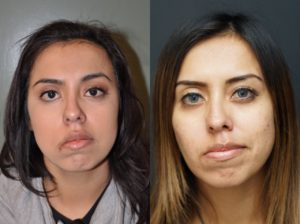
By: Dr. Amit Kochhar
A 26-year-old woman presents with a 1 year history of complete right sided facial paralysis that began immediately following removal of a large acoustic neuroma. In addition to her right facial droop, she also complained of right nasal obstruction and difficulty eating and drinking from the right side of her mouth. She felt it had become more difficult for others to comprehend her speech.
Examination
- Complete right sided facial paralysis.
- Incomplete right upper eyelid closure.
- Severe right lower eyelid ectropion.
- Right midface ptosis with right nasal obstruction from nasal valve collapse.
Treatment
- Upper Face: Right upper eyelid platinum weight placement and lower eyelid tarsal strip.
- Midface/Lower Face: Right external nasal valve repair, combination right masseter nerve transfer, and hypoglossal jump graft nerve transfer.

Caption: This photo demonstrates a 18 month before and after with combination right masseter nerve transfer with hypoglossal jump graft nerve transfer.
Discussion
What is combination masseter nerve transfer with hypoglossal jump graft nerve transfer?
Combining masseteric nerve transfer with jump graft from the hypoglossal nerve for facial nerve reconstruction is an important technique for the dynamic reanimation of the paralyzed face in patients who have chronic facial paralysis (i.e., greater than 1 year).
The donor nerve graft was harvested from the right great auricular nerve, but the sural, or medial antebrachial cutaneous nerves, can also be used depending on the length and number of branches required. The graft was then connected between the main trunk of the facial nerve and the hypoglossal nerve in an end to side fashion.
The nerve to the masseter muscle was dissected and traced inferiorly to provide adequate length for tension-free coaptation. The masseteric nerve was divided and connected to a peripheral buccal nerve branch selected by stimulating the nerve stumps that provides the strongest pure oral commissure excursion on stimulation.
Recovery with noticeable facial movement will occur in 4-6 months. The patient can initiate a smile by “biting down” on the affected side. This results in the corner of the mouth being pulled upwards in a more symmetric position.
This procedure provides improvement for facial symmetry at rest, dynamic facial movement, often improves speech, and eating.
—————————
At Pacific Head and Neck, we employ thorough evaluation and treatment regimes. To set up a consultation with our top Los Angeles ENT doctors, feel free to call us at (310) 477-5558.







